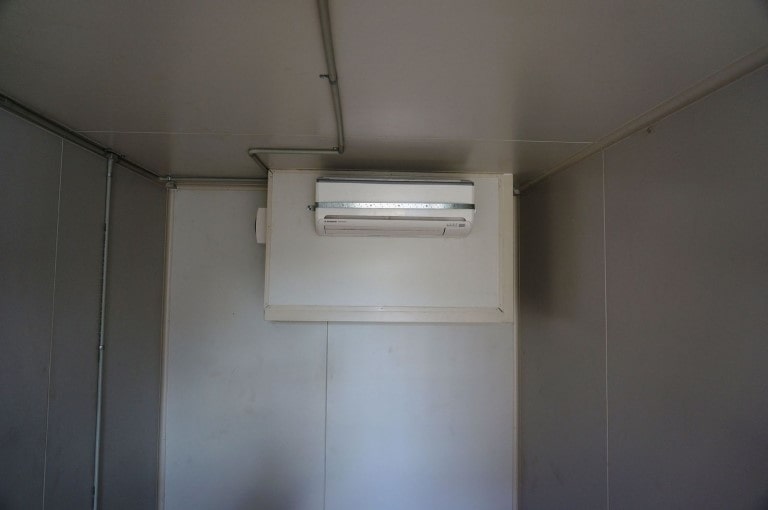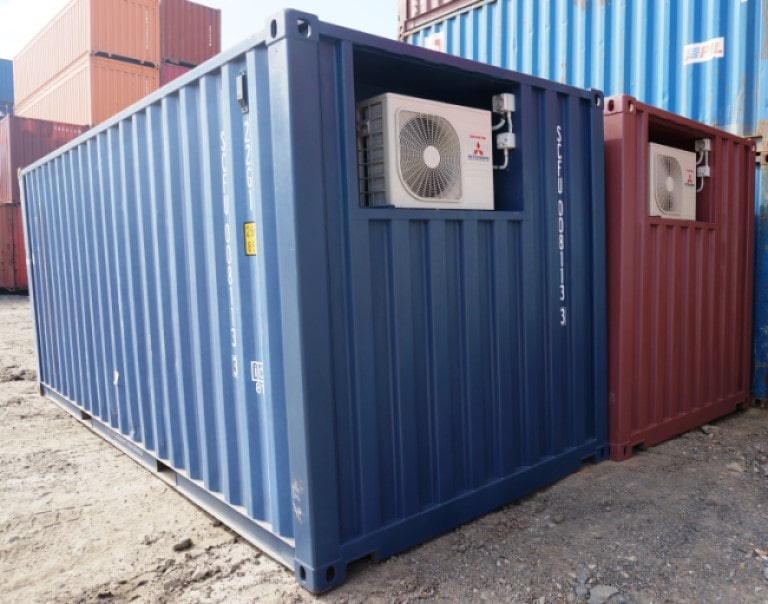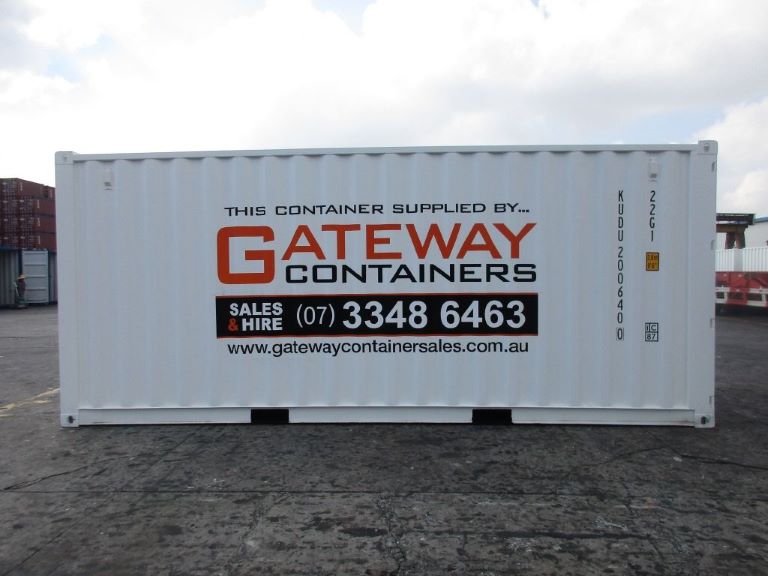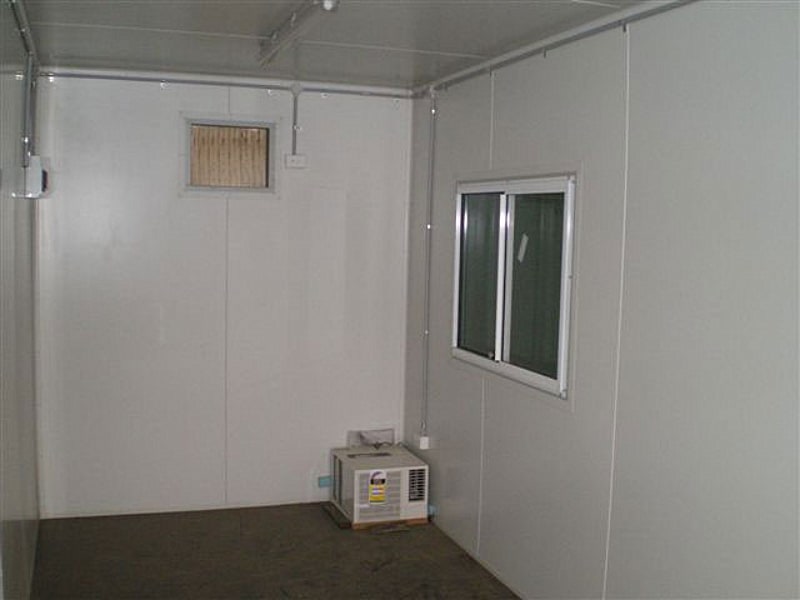When converting a shipping container into an office or living space, you should always consider insulating it. Shipping container insulation is essential for those wanting comfort and cost-effective cooling/heating. This can be done in several ways depending on your requirements for the container building and what kind of climate it will be situated in.
What is shipping container insulation?
Shipping container insulation is a form of insulation used to reduce heat loss and help control indoor air temperatures. This insulation can be applied to any size shipping container with metal walls. Shipping container walls form steel boxes which are a great conductor of heat. A shipping container house, office, or even basic storage container have been known to reach extreme temperatures of more than 15-20 degrees celsius higher than the external temperature.
Corrugated steel shipping container homes make for extraordinary living spaces. Still, you will need insulation to avoid extreme heat by controlling heat energy transmission and holding onto warmth in cooler months by reducing the heat flow.
If you want a consistent temperature before any construction has begun, your shipping container should be pre-insulated as an integral part of the design process.
The benefits of insulating a shipping container
1. Sound
Firstly, sounds echo in a metal box, and insulation will reduce the acoustic problems that could drive the occupant crazy otherwise! At the very least, you should have a layer of insulation to reduce the noise problems. It can act as a barrier inside your container house to keep your neighbours happy.
2. Heat
In an area with a hot climate, like Australia, you need to insulate your shipping container construction to control internal temperatures. Water vapour in the air condenses on contact with surfaces, and unless you have a seamless vapour barrier of insulation in the building, this could lead to corrosion of the container and shorten its usable life. Insulation will also slow the warming and cooling process during the day, so it makes sense to insulate for the building to be more comfortable.
3. Cold
The third reason everyone thinks of when they consider insulation is that it’s perfect for extreme cold and temperate climates! With insulation, the building will maintain a cosy temperature with thermal efficiency, lose less heat and reduce your energy bills in keeping it warm.
4. Planning
Finally, local planning regulations for any permanent building will often require a certain level of insulation. If you are building a shipping container house, you will need to follow many regulations, so hiring an engineer might be essential. However, if you make a temporary home office or basic storage container, you might not need as much planning permission. You should always check on these as part of your planning, as you may not be able to go ahead with your build if you do not comply with their regulations.

What types of insulation materials are there?
Insulation for shipping containers can be made from various materials such as standard wood lining, polyisocyanurate foam board, cellular glass wool, fibreglass batts, insulation panels, or recycled materials such as old carpets or fabrics.
If you’re looking to be environmentally friendly, the best insulation type would be created from recycled products. Not only will your build be guilt-free, but you will also reduce your overall costs.
Whatever you are thinking of, before you lock anything in, you should always make sure that local authorities approve the type of material you choose for your insulation. Your selected insulation will also need to provide a decent level of thermal resistance.
How can climate affect this decision?
Climate can affect your choice when it comes to the material you choose for your insulation. The best insulation for hot climates is usually lightweight, easy to apply and can be removed. Foam board insulation is an excellent example of the type of material that best fits this description. In addition, your shipping container build will benefit from natural breeze and ventilation.
The best insulation for colder climates is thick, heavy-duty and fire-resistant. This type of insulation is more expensive but the best for being thermally stable. Fibreglass, wool and foam are suitable materials for this type of build. This insulation will help you prevent high heating costs.
When it comes to warmer climates, it’s a great idea to consider insulation like spray foam. Not only does this require no framing built it has a high level of efficiency when it comes to keeping cooler temperatures trapped inside the container. You could also consider additional insulation options like a radiant barrier. These barriers reflect the heat instead of simply slowing its entry into your space.
How to insulate a shipping container
Shipping containers have typical wall heights (standard units have an 8-foot-6 ceiling, and high cube units have a 9-foot-6 ceiling), are not constructed like regular accommodation units, and are essentially steel boxes. Therefore, any materials will need to be modified to suit whichever style of insulation you choose, unless using shipping container specific insulation.

Exterior insulation
So, you’ve decided to insulate your container building. One thing that makes people think twice about insulating is that it can take up space within the building as you pad the inside by up to 6 cm on the roof and sides. So why not insulate the exterior walls? Utilising the space outside does not reduce your internal living volume.
There are two ways of insulating the building from the outside:
-
Natural materials
-
Spray foam insulation
Both of these have close contact with the container and, as a result, will keep water away from the metal and help prolong its life.
Natural materials such as using strawbales over the shipping containers, with a mud/plaster/stucco layer over that to give you a double insulation layer. This is a good solution for hotter climates such as Australia, as this method will reduce the radiant heat and keep the inside of the container cool even in desert-like temperatures. These raw materials are eco-friendly forms of insulation and a cost-effective option.
Spray foam insulation is considered one of the better insulators, but the best stuff for insulation is very poisonous to the environment. Many contain HCFC’s that are held responsible for the hole in the ozone layer over Australia. However, the more expensive expanding polyurethane spray-on foam has a high insulating value, and a relatively thin layer can keep the building warm and dry inside.
Several companies have developed spray on insulation that dispenses with the nastiest of chemicals and use things like shredded newspaper as the primary insulating substance, so if you want to avoid planet harming materials, then have a look around and see what there is out there!
Internal insulation/traditional insulation
Traditionally people insulate the building’s internal wall. A video of how to do this can be seen below this section. It involves making stud walls and insulating the gaps between the studs. However, condensation is an issue, so you should consult an expert about insulating the building properly using traditional insulation.
There are ‘green’ alternatives to the glass fibre blankets that are mainly used today as well. Sheep’s wool and recycled cotton are used a lot for this type of insulation, which are very sustainable and effective means of keeping your building warm.
Again, do consider spray-on insulation for your container building on the inside. Typically the best spray-on insulation can only be 2.5 cm thick with the same insulation properties as the fibreglass, wool or cotton blanket insulation options described above.
FAQs about insulating a shipping container
Where to place your container insulation?
The most common answer is to place it on the inside of each wall in your shipping container after stud walls are added. However some people prefer to cover the exterior – this depends on how much interior space you require.
What is EPS?
Extruded Polystyrene Foam Insulation is small beads made out of plastic that is fused together and appear like white foam (the same material disposable coffee cups are made out of)
What is cork?
Cork is a form of natural insulation. It is great when it comes to creating acoustic barriers.
What is polyurethane?
This is a material that is used in both Open-Cell Spray Polyurethane Foam, as well as Closed-Cell Spray Polyurethane Foam. These are both spray foam’s used in insulation, with Closed-Cell Spray Polyurethane Foam having a higher R-Value of the foam.
What is R-Value?
R-value is the unit of measurement we use to rate insulation (the higher the value the better the insulation).
What are hygroscopic fibres?
They are fibres that absorb moisture like those that are found in wool.

The benefits of a professional container insulation installation
Gateway Container Sales sell a range of shipping containers and offer insulation installation to save you the hassle of insulating them yourself. We can supply 20ft or 40ft ‘reefer’ containers designed to control the temperature of the goods stored, as well as standard 10ft, 20ft or 40ft containers that can be retrofitted with insulation to create better energy efficiency in container conversions. Contact us for a quote on your requirements.




